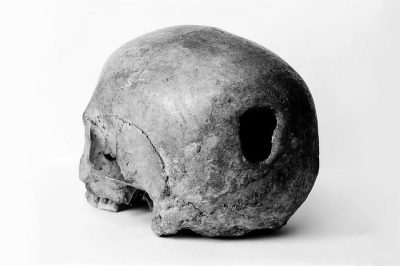The Quirky Palate and Gourmet Adventures of Charles Darwin
Share

Charles Darwin. (Julia Margaret Cameron / Wikimedia Commons)
Every enthusiast has their own idealistic ways to drive their passion. Among these, scientists are a fairly odd bunch who go to great lengths in search of the elusive solutions they are on the lookout for. Not falling short of eccentric traditions and methods, scientists have even resorted to eating organisms that they have themselves discovered. Charles Darwin, one of the influential figures in science, is one such individual who was quite open about his strange diet. While eating an endangered species might otherwise be absolutely horrifying to the scientific community, eating the organism you have discovered yourself might give you a free pass.
Charles Robert Darwin also conceived the theory of Natural Selection, along with his famed Theory of Evolution, which he came to through a series of detailed investigations in natural sciences. Due to his contributions to shaping our conception of anthropology and the evolution of humankind, Darwin may be regarded as one of the most influential figures in the field of science and has had the honour of being buried in Westminster Abbey.
Dine with Darwin
Charles Darwin’s appreciation for animals and their evolutionary traits is not unnoticed. While they contributed to his scientific discoveries which changed the face of how we perceive evolution, they also contributed to his ghastly appetite. Darwin considered the human palate to be vast and capable of devouring various species of beasts and birds that the world had to offer. According to him, what was unknown to the human palate offered savoury delights along with a fundamental insight into the existence of the beast that was being devoured.
The glutton club
His habit of indulgence was furthered by him being a member of the Glutton Club at Cambridge, where a select group of people shared the same ideology and dared to indulge in the various species of exotic animals. The Glutton Club was short lived. They mostly feasted upon birds and were able to indulge in a few species like hawks, a heron-like wading bird called a Bittern and several other bird species. However, when they came upon a brown owl they lost their appetite stating that it was an indescribable kind of flesh.
A strong will is what makes a scientist devote himself to the journey that has been embarked upon, and this is a major characteristic that has been displayed by Charles Darwin. Despite the dissolution of the Glutton Club, he continued on his culinary adventures.
A culinary adventure aboard the HMS Beagle
While he was in the Galapagos Islands, he tasted several species of iguana. He tasted armadillo which he and several other sailors aboard the HMS Beagle claimed tasted like duck. Not only did he taste the famed ‘Giant Tortoise’, which is now an endangered species in the Galapagos Islands, but he managed to make a savoury delight by frying them. What’s more, is that he made a bold choice and managed to even savour the contents of the tortoise’s bladder. Upon tasting an entire cup, he claimed it was limpid in taste and only slightly bitter. He even dined on something as spectacular as a puma, only to say that the meat of a puma had a taste which was “remarkably like veal”. Among several species of rodents, he consumed a 20 pound rodent, which was believed to be an ‘agouti’, and described it as the best meal he had ever tasted and continued to feast on it.
The unfortunate Christmas day dinner
People make a lot of mistakes and blunders in their lifetime, only to regret it later on. Charles Darwin unknowingly made a terrible mistake that he considered one of the biggest blunders of his life. It was a culinary blunder that came in the form of 1833’s Christmas Day Dinner. Darwin’s team, knowing that he enjoys the unique savoury delights, prepared him a rather special meal that consisted of a Rhea. It is a large flightless bird similar to an Emu that is native to Altiplano and Patagonia in South America. It is known as the lesser Rhea, or Rhea Darwinii which derived its name from Darwin himself. This Rhea was a smaller, much rarer bird than the common Rhea. While Darwin was feasting upon the precious creature, he realized the bird’s importance, as the creature he had been frantically looking for during his entire journey, and immediately stopped his meal and gathered the remaining bits of the bird which included its head, neck, a few feathers and its legs. As scrumptious as the meal was, he instantly regretted it. The value of the bird dawned upon him, due to which he sent the remaining parts of the bird back to England for safekeeping.
Darwin’s Illness: Killer parasite
After leading a rather content life, Darwin succumbed to an illness that gradually took a toll on him and led to his death. He suffered palpitations, vomiting, stomach problems, severe boils and trembling, primarily due to stress from work. The cause of his illness was unknown at first and any attempts at treatment seemed to have no effect. Later on, he was diagnosed with angina pectoris or coronary thrombosis. It was later speculated that he was bitten by the “Kissing Bug” while he was in Mendoza, Argentina in 1835. He exhibited a variety of symptoms including cardiac disease and chronic headaches. Doctors then came to the conclusion that he had what was called the “Chagas Disease”. T.Cruzi is the name of the infecting parasite that got Darwin into this predicament.
He died a happy man on 19 April 1882. His ideas and contributions were revolutionary at the very least. He was honoured with burial at Westminster Abbey close to Sir Isaac Newton and John Herschel. In the end, it all boiled down to contracting a disease from doing what he loved in his quest for scientific discovery.
Enjoyed this article? Also, check out “Tarrare: The Man Who Ate Too Much Yet Stopped at Nothing“.
Fact Analysis:
STSTW Media strives to deliver accurate information through careful research. However, things can go wrong. If you find the above article inaccurate or biased, please let us know at [email protected]













